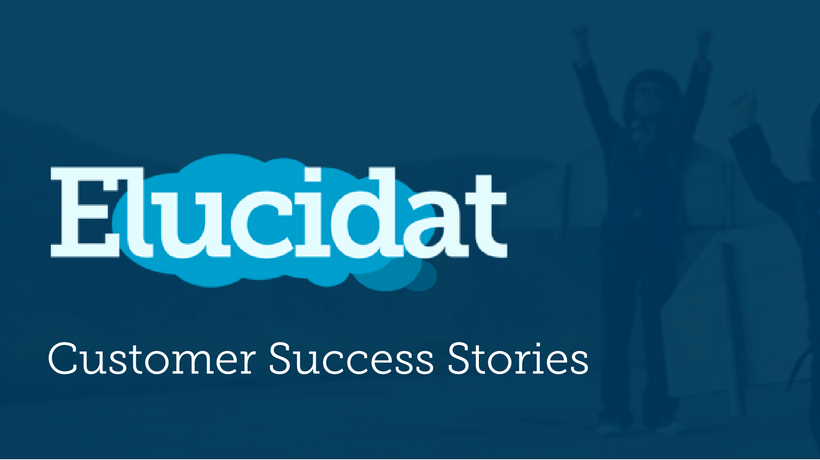What Is Customer Success? How Is It Set In eLearning?
Customer success is defined as a business method or model, which ensures that customers achieve their desired objective or outcome by using an organization’s product or service.
In the last few years, the term ‘Customer Success’ has received a lot of traction, especially in software development. The focus is not just to meet the expectations of the customer, but to vastly exceed the expectations, and make the customer an advocate of your product/services. In this article, we shall examine the various stages of ‘Customer Success’, how organizations can take steps to integrate Customer Success within the framework of their business.
The Stages Of Customer Success
Mission
This is the first stage in the customer success cycle that lets you chart out your mission and set your customer success goals. This is also the stage wherein you get to hand-pick members who will comprise your CS Team.
Customer Journey
These are the steps that you will have to take to convert a potential lead or prospect into a customer by making them buy your product. All marketing initiatives that you undertake to conclude the sale will fall into the ambit of the ‘Customer Journey’.
People
This is one of the most crucial components of the entire CS cycle. You hand-pick the right person for each task that leads to Customer Success. You also need to ensure that the staff members are appropriately trained and are competent to perform the tasks for which they have been hired.
Process
Once you have the staff in place and empower them with the skills that they need to do their job, you should lay out a clear process. By standardizing a process that your CS team can follow and monitoring it to ensure that all chinks are ironed out, you are all set to achieve Customer Success.
A TSIA survey found that “83% of respondents reported they had trouble easily accessing the data they needed to do their jobs”.
Hence it is of paramount importance that the members of your team understand and know their roles and are equipped to perform their tasks.
Technology
Start easy, start simple, and do not invest a lot into complex software systems to build your CS story. The phone and email are still your best ways forward to reach out to potential customers. A bit of intelligent social media marketing and online advertising and you are on your way. As you scale up and grow to invest with prudence in specialized tools that make life easier for your CS team.
Measure And Iterate
At every step of your CS cycle, put into place a monitoring mechanism that lets you evaluate the pros and cons of each action. Based on the data that you derive, customize the steps or processes, retrain your staff as required, and make them accountable to achieve their goals.
You may always watch videos to understand what customer success is and why it is important.
eLearning And Customer Success
Modern eLearning development works on the same plane as software development. There’s a business requirement, a client, and a diverse team of skilled professionals working together to create the eLearning solution. In a market that’s becoming increasingly competitive with numerous players offering high-quality eLearning at an affordable price, it becomes even more important for eLearning companies to focus on customer success.
Remember all it takes is one bad client review on a public forum to bring down the credibility of the work that you do. Though there are examples of organizations that worked hard to regain trust and continue to exist and do business; the impact of a negative review can be quite damaging for the growth prospects of a startup or a small-sized learning organization.
Failure And Motivational Leadership
The fear of failure is a powerful tool that you can use to your advantage both in your personal and professional lives. As organizations are looking to achieve their business goals, what is it that motivates you? It is important to introspect, especially for the top-tier executives to figure out how they can improve their revenues and business models. If the senior management team can set an example and motivate the other members of the organization with pride, passion, and a reason other than just the pay-check, it means that the organization is on the right track to success.
There is a video by tech-leader Rashim Mogha on leadership which can also be of great assistance to you as it provides useful insights.
Designing eLearning For Customer Success
Before we go into points specific to Customer Success, do spend some time studying this infographic, which we had created earlier that showcases the steps involved in ‘Designing Effective eLearning’.
How do you achieve customer success with the eLearning that you create? Some ideas are listed below:
Clarity
It is important to be aware of the purpose of the eLearning project that your team is working on. Who are the learners going to be? What is their current role, and what will they achieve once they complete the program? Ask all these questions at the beginning, and find the answers before you commence working on the project. Ideally, you will get all these details from your Project Manager and client contact in the project kick-off meeting and the pre-design sessions. Typically, a questionnaire is sent out with all the queries to the client-contact and we get replies via email or a video-call.
Value And Purpose
Let every member of your team value their work. Unless they find purpose and value in the work that they do, their work is going to be sub-standard. Motivate your team and lead by example.
Structure Work & Create Project Sprints
eLearning development is structured systematically and in stages. This ensures that stakeholders involved in every stage validate the work before it moves to the next stage. Where required, ensure that client approval is received before your team proceeds to the next stage in the development lifecycle. Use project sprints to get work done faster and with focus.
Never Stop Learning
Invest in training your team members in the technologies relevant to eLearning development. We have a multitude of course-authoring and video-production tools that have made eLearning simpler and easier. Be prepared to create future-ready learning solutions.
Understanding Strengths And Limitations
Let your Customer Success teamwork with the design and development team. It is a mutually beneficial relationship that lets people understand what their work entails and that there are no unrealistic expectations.
Two Examples Οf Customer Success
Example 1: Breaking Cultural Αnd Virtual Barriers
A leader in financial services based out of the U.S. and with offices around the world wanted a culture sensitization program. The solution would also have to educate learners about Virtual and Matrix Teams for people working in roles of manager and above. We created an animated eLearning course that used real-life problem-solving scenarios at the workplace. The customer was pleased with the project and deployed the learning solution globally.
Example 2: On-Demand Product Training
A leader in cloud-based innovations and business mobility software came to us with a requirement that involved the refinement and conversion of a vast chunk of ILT material into an eLearning program. The client wanted to tap into content monetization by putting up the content online and offering training certification to users. They also wanted to drive product adoption at a quick pace. We created and deployed over 400 hours of engaging eLearning content, which helped the client grow enrolments by up to 50% year-on-year and helped them make significant savings in training costs.
Conclusion
Modern businesses cannot afford to just chase profits blindly and ignore the needs of their customers. As we see the steady and assured rise of the subscription model of businesses, ‘Learning as a Service’ is making its presence felt in the eLearning industry. Organizations are no longer tied to one specific vendor for their learning requirements or forced to invest in costly on-premise server-based Learning Management Systems. The power of the cloud now gives organizations the choice to opt for learning licenses as per their requirements and all solutions sit in the cloud. As an eLearning vendor, it is important for you to understand the expectations of your customers and achieve customer success by exceeding their expectations by the quality of your work. Are you involved in the delivery of eLearning projects in your organization? Tell us what goes into meeting customer needs and achieving customer success. We would love to hear your thoughts on the topic.
Sources:
- The Cycle of Customer Success: A Blueprint for Customer Success Teams
- Knowledge Management Is The Secret To Customer Success









